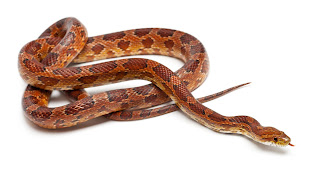Golden
Retrievers
Golden Retrievers are very sociable dogs.
Its origins date back to 1865 when the aristocrat Lord tweedmouth was looking
for the perfect dog to facilitate bird hunting in the woods of Guisachan,
Scotland. After about 20 years of crossbreeding, the Golden Retriever was ready
to be presented, as it’s known nowadays. Near 1925, it was recognized by the
American Kennel Club (AKC), and today is one of the most popular breeds around
the world.
This kind hunter breed loves the water, and
they have webbed paws ideal for swimming. As hunting dogs, their “soft mouth”
is a great advantage because they transport the prey without chewing it. Golden
Retrievers have a strong constitution; their height is 22-24 inches (Males) and
20-22 inches (Females) and weighs around 60-80 pounds (males) and 55-70 pounds
(Females). Their external coat is water-repellent, and they have a dense
interior one, in a variety of gold tones. Their lifespan is supposed to be
12-14 years.
They are obedient and with a simple
training they can be ready to follow commands. It is not recommended to choose
this breed as guardian dogs, as they have a lovely personality. However, their
unique qualities make them useful for different scenarios: victims search and
rescue, helping people with disabilities, detection of drugs and explosives.
Some essential tips to take care of this
lovely friend at home are:
Diet
The Nutrition it's very important when looking
for their food. Try to find multiple meat proteins as the main ingredients.
Protein from various sources such as lamb, chicken and fish is viewed as being
beneficial unless your dog is allergic to certain proteins. Their daily diet
should be related to the amount of physical activity performed, as they are
prone to obesity. They should have fixed schedules. Serve fresh water all the
time using stainless steel buckets.
Exercise
and play
They are very active, and can easily run
the whole day. It is recommended that the dogs exercise on a regular basis,
they should be taken outside for daily walks and also get the opportunity to
swim at some point. It would be good to keep them in open areas during their
spare time. Also, Golden Retrievers love to chew everything around, so you need
to provide them squeaky and super tough toys, which can satisfy that need and
also clean their teeth.
Health
Because they are prone to hip dysplasia and
skin problems, common symptoms like the resistance of doing some movements,
itching, and ears discomfort, are signals that something is not right. The
veterinary supervision is a key for guarantee the appropriate prevention and
treatment of these symptoms.
The Golden Retriever, a playful, energetic,
and smart dog, with and incredible loyalty behavior is the perfect family pet.
Grooming
Because of its density hair, it requires to
be brushed every day. This way you will to control excessive hair loss and avoid
knotted hair, which can lead to infections with parasites like fleas and mites.
A monthly bath with a special dry shampoo
will keep your Golden Retriever clean and will prevent the presence of bacteria
and parasites. Remember to clean its ears periodically, as they are likely to
acquire infections.



